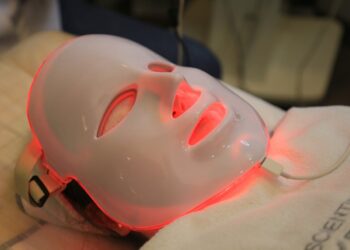Introduction:
Regular children’s hearing tests are crucial for early detection and intervention of potential hearing issues before they escalate into larger problems. Early identification is vital for a child’s overall development, impacting their speech, language acquisition, learning, and social interaction.
This blog post sheds light on what parents should expect during a private children’s hearing test appointment at a paediatric audiology clinic by revealing the process so parents can better prepare themselves and their children for these essential check-ups to ensure a smooth experience for their child.
Medical History:
At the onset of a children’s hearing test appointment, parents are typically asked to provide a detailed medical history of their child, including any current medications. This information is vital for audiologists to understand potential contributing factors to any hearing concerns. Factors such as past ear infections, medication history, and family hearing history can all play a role in assessing a child’s auditory health. Therefore, it’s crucial for parents to come prepared to share this information accurately.
Ear Exam:
An ear examination is a very important and necessary step in an auditory check-up. Using an otoscope, the audiologist will carefully examine the outer and middle ear of the child for any blockages such as wax, fluid and possible signs of an ear infection. Identifying and addressing these obstructions is essential as they can affect the accuracy of the hearing test results. Ensuring a clear ear canal is paramount for obtaining accurate and reliable test readings.
Ear Wax Removal:
In cases where an earwax blockage is identified during the ear exam, your child’s audiologists may recommend an ear wax removal to facilitate accurate readings during the hearing test. However, it’s important to note that this service often comes with an additional fee. To avoid any extra costs, it’s advisable for parents to clean their child’s ears before the appointment if possible. This simple step can help streamline the testing process and ensure accurate results.
Pure Tone Audiometry Test:
The next step in the appointment involves the actual hearing test called the pure tone audiometry test. During this test, the child will be placed in a soundproof booth and worn a headphone to listen to sounds being played at different frequencies. If it’s not done in a soundproof booth, an environment with ambient noise that doesn’t exceed 35 DBA according to the recommended procedure by the British Society of Audiology (the BSA). Older children may be asked to press a button or indicate when they hear a sound, while younger children may be observed for reactions such as turning towards the sound source. In some cases, parents may be allowed to enter the booth to provide comfort and support to their child during the test.
Tympanometry Test:
In private audiology services, your child’s audiologist may go ahead and have a Tympanometry test to evaluate the function of your child’s middle ear and mobility of the eardrum. A small probe is placed in the ear during this test, and air pressure variations are introduced to measure the eardrum’s response. This test helps audiologists assess the health of the middle ear and identify any abnormalities that may affect hearing.
Speech in Noise Test:
The speech-in-noise hearing test evaluates your child’s ability to understand speech in noisy environments. During this test, prerecorded sounds are played for your child to identify with background noise that mimics real-life listening situations. Your child’s audiologist will look out for their ability to discern and repeat the speech amidst the background noise. This test provides valuable information about a child’s auditory processing abilities in challenging listening conditions.
Result and Diagnosis:
Following the hearing test and additional assessments, your child’s audiologist will review the results with you in an easily comprehensible manner. If hearing loss is detected, the audiologist will discuss treatment and management options, which may include the use of hearing aids or other interventions. It’s essential for parents to actively participate in this discussion and ask any questions they may have regarding their child’s auditory health.
Conclusion:
In conclusion, private paediatric audiology appointments play a crucial role in ensuring the early detection and management of hearing issues in children. By understanding what to expect during these appointments, parents can better prepare themselves and their children for the testing process. With proactive care and attention, parents can help ensure the best possible outcomes for their children’s hearing health.
Remember, this blog post provides a general overview, and your specific experience at a paediatric audiology clinic may vary. Don’t hesitate to ask questions or clarify any information with the audiologist to ensure a smooth and informative experience for both you and your child during their private children’s hearing test.







